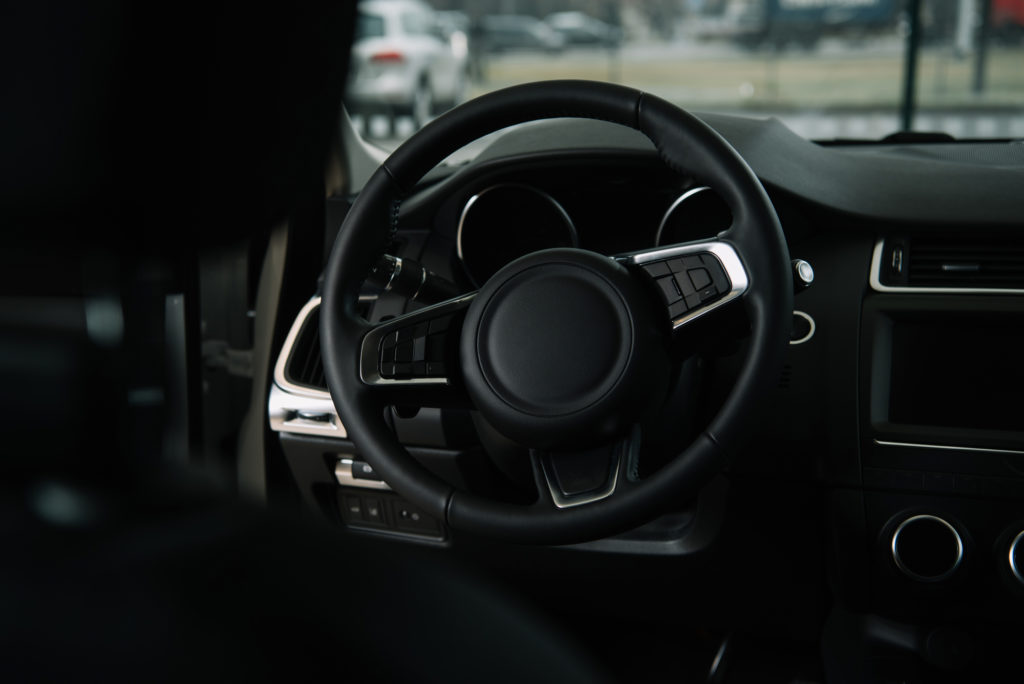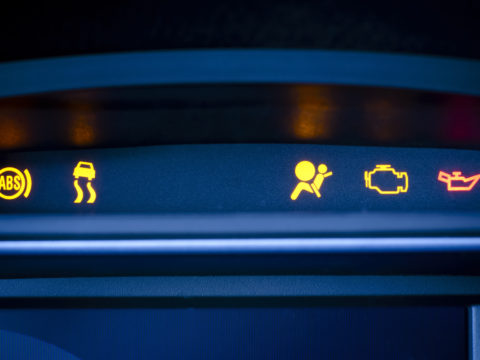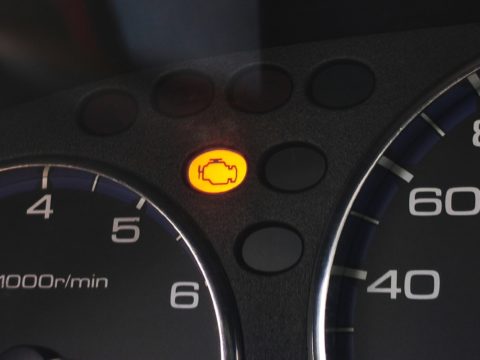There’s a lot of valuable information about how clock springs impact a car’s ability to perform, and people often overlook these devices. In the sections below, we’ll cover the purpose of clock springs along with different causes and symptoms of bad clock springs.

Contents
What Is a Clock Spring?
In any car, clock springs play an important role in making multiple systems function correctly, such as cruise control, traction control systems, the horn, and more.
Without a clock spring, many of the systems in a car would fail to work in tandem as they usually do, and this alone is reason enough not to overlook the importance of this accessory.
Other Names for Clock Spring
Some refer to a clock spring as a coil spring unit, clock spring coil, spiral cable, contact reel, coil assembly, and cable reel assembly. If you ever come across these alternate names, know that they all refer to the same device.
Where Is It Located in a Car?
The clock spring is between the steering wheel and the steering column. If you ever remove your steering wheel, you will see a circular object that is usually black or yellow. That is the clock spring, and it will always have wires running from it into the steering column.
Clock Spring Diagram
You can find a diagram of how a clock spring looks here.
How Does a Clock Spring Work?
A clock spring has connectors that link the steering wheel to the rest of the vehicle’s system. Along with the horn, every steering wheel has numerous buttons on it. Sometimes these buttons are on the sides of the steering wheel, and other times, they are on the front.
Generally, they control the cruise control, radio volume, and numerous other functions. The clock spring allows them to connect to the rest of the vehicle. Every clock spring comes with multiple connectors that connect to these buttons, as well as the horn and the airbag, and conductors on the inside of the clock spring allow it to rotate and transmit power.
The clock spring will no longer work if the conductors ever break.
Clock Spring Purpose
Here are a few different purposes that a clock spring serves.
Safely Connect Cables Between the Steering Wheel and Steering Column
Because the cables for the cruise control, airbag system, horn, and other functions are often found on a steering wheel, something has to connect those cables from the steering column to the steering wheel. If you were to connect the cables directly to the steering wheel, those cables would break every time the steering wheel turns,
Having the cables connected to the steering wheel through the clock spring allows the steering wheel to turn without causing damage to the wires.
Enables the Horn to Function
You should never drive without certain things, and a working horn is one of them. Because the clock spring is responsible for transmitting signals from the steering wheel buttons to the car’s computer, it is the part that allows you to beep the horn.
Enables the Airbag
While the horn is one of the essential parts of any vehicle for safety reasons, the airbag is equally essential, and a clock spring allows an airbag to deploy. Because the clock spring transmits signals from the steering wheel to the car computer, if it ever breaks, the computer will not know to deploy the airbag when the situation calls for it.
Allows the Steering Wheel to Turn Smoothly
A clock spring does not directly affect the actual turning of a steering wheel to a serious degree, but it does still play a factor. If a clock spring is going bad or breaks, you will sometimes experience a rubbing or clicking sound when you turn the steering wheel. In rare cases, turning the steering wheel may not feel as smooth as it should if the clock spring breaks.
Sends Signal to the Throttle Position Sensor
The throttle position sensor is responsible for maintaining the appropriate amount of airflow to the engine’s intake manifold by checking the throttle valve. A clock spring plays a role in this process, and if it goes bad, there is a chance that it will send electrical spikes to the throttle position sensor and cause problems.
What Causes a Clock Spring Failure?
Many things can cause a clock spring to go bad, but we’ll cover the most common causes below.
Age and Attrition
As is the case with most car parts, a clock spring can eventually go bad simply because it gets too old. However, this is an infrequent occurrence, as most clock springs tend to last the entire lifetime of a vehicle, so long as the car receives a reasonable amount of maintenance.
The motion of turning the steering wheel engages the clock spring, meaning that it is practically always in use to at least some degree. Of course, because the clock spring’s design can handle lots of turning clockwise and counterclockwise, it will likely not go bad simply from getting lots of use.
Damage After a Car Crash
You might think that the clock spring is nice and safe because it sits between the steering wheel and the steering column. In some regard, it is actually in a reasonably safe spot. However, it can still sustain damage quite easily in the event of a car crash.
Sometimes the damage will not immediately show, which is why it is essential to always have a professional check your car’s clock spring after an accident. If you don’t, the clock spring may start acting out of sorts down the line due to damage from the crash that grew worse and worse with time.
Incorrect Installation
Because a clock spring has a ribbon of conductors inside, the ribbon can rotate quite a ways, but it will become too tight and break if it accidentally turns too far. This happens because the ribbon becomes overextended, and the conductors on it break as a result.
To avoid this happening, if you ever install a clock spring yourself, make sure you install the device at the proper revolution. If you install the clock spring when it is already wound tight and then turn the steering wheel, the clock spring will turn even more and likely break immediately.
Accidental Damage During Steering Column Repairs
Doing any repairs to a car’s steering column is a delicate process because you need to ensure you don’t accidentally damage the clock spring in the process. It may sound like a difficult thing to do, but damaging the clock spring in this way happens reasonably often. Even certified mechanics can do it if they are not paying close enough attention to what they are doing.
If you have some form of work done on your steering wheel column, check the clock spring afterward for any damage, especially if you took the clock spring at any point.

Broken Clock Spring Symptoms
Let’s now cover some symptoms of a broken clock spring.
Dead Steering Wheel Buttons
If the buttons on your car’s steering wheel stop working for no apparent reason, it may very well mean that your car’s clock spring broke. Make sure the buttons are not working, then turn the car off and on and try the buttons again. If they still do nothing, you can assume that the clock spring broke at some point.
Traction Control System Warning Light
Suppose the traction control warning light comes on. In that case, this can indicate several problems, but because the traction control system connects to the cruise control system, it can mean that the clock spring broke. Identifying the warning light source will require the use of an OBD2 scanner, which is its own process that you may want to have done by a professional.
Airbag Warning Light
The airbag system is sensitive, so you can expect the airbag warning light to come on if there is something wrong with the clock spring. If you notice that the airbag warning light only comes on at certain times, then it may happen due to the ribbon inside the clock spring being faulty as it moves around when you turn the steering wheel.
Airbag Fails to Deploy
If you remember from the earlier sections, the airbag system gets signals from the clock spring that tell it when to deploy the airbag. With such being the case, so long as the clock spring is working, the airbag should deploy if you ever get into an accident. If the airbag fails to deploy, many things can cause this, but you should check the clock spring first.
Malfunctioning Horn
Since the horn is one of the main functions that rely on a working clock spring, if you try pressing on the horn and nothing happens, it almost certainly means that the clock spring broke. If the horn only beeps sometimes and not all the time, it is more likely that the clock spring is faulty and not completely broken.
Abnormal Steering Wheel Behavior
Your car’s steering wheel should always turn smoothly and without any noise, so when it moves a bit sluggish or makes strange sounds when turning, your clock spring could cause the issue. Though if you check your clock spring and find nothing wrong with it, that means either the steering wheel itself or the steering wheel column are experiencing issues.
How Do You Test a Clock Spring’s Functionality
If you want to test a clock spring to see its condition, follow the steps below.
Tools Needed
Assuming you already have the clock spring out, the only tool you will need to test it is a multimeter.
Step 1
Set your multimeter to the Ohms setting. That way, you’ll get a resistance reading once you connect the multimeter to the clock spring.
Step 2
Connect the positive lead of your multimeter to the clock spring plug that connects to the airbag system.
Step 3
Connect the negative lead of your multimeter to one of the power supply pins in the backside port of the clock spring. Then wait until a resistance reading shows on your multimeter.
Step 4
Rotate the top of the clock spring to replicate how the clock spring moves when the steering wheel turns and watch the readings on the multimeter. If you do not get a consistent or infinite reading on the multimeter, that means one or more of the clock spring’s wires are faulty.
What to Do If You Notice a Broken Clock Spring in Your Car
If you ever notice a broken clock spring in your car, the best thing you can do is take it to a certified mechanic to have a professional fix it. Or, if you have a lot of experience working on cars, you can attempt to fix the clock spring yourself.
Clock Spring Replacement Cost and Buying Guide
This is a quick guide on the most important things you’ll need to know when getting a new clock spring to replace a broken one.
How Much Is a Clock Spring?
The price of a clock spring largely depends on the vehicle it is for, but generally, you can purchase one for somewhere between $50 and $200.
Can It Be Repaired?
Yes, repairing a clock spring is usually possible unless the damage done to it is too severe, in which case you will have to settle for buying a new one.
Cost of Replacement
If you’re going to get a replacement clock spring, it will cost between $50 and $200. However, if you plan to have a professional install it, you will also have to account for the additional cost of labor.
Where to Buy Clock Springs
You can buy clock springs at your local auto parts shop, or you can look on Amazon for specific types of clock springs.
Clock Spring FAQs
Here are answers to some questions that you may still have at this point about clock springs.
Can you drive with a broken clock spring?
Yes, you can drive with a broken clock spring. However, it is far from advisable, especially if you do not have access to your car’s horn or airbag.
How long should a clock spring last?
Assuming a vehicle receives good maintenance, a clock spring should last the entire lifetime of a car. It will die before then in rare cases, as age and use will eventually take their toll on the device.
Is a clock spring covered under warranty?
Yes, warranties cover clock springs, but this does not go for all warranties. Because this is the case, you should check your car’s warranty to see whether it covers the clock spring.
Will a bad clock spring deploy airbags?
In some instances, the answer is yes. A bad clock spring is unpredictable because it lacks consistency even though it can still function. The airbag may deploy, it might not, or it can even deploy by accident, but the best thing you can do is fix the clock spring as soon as possible.














